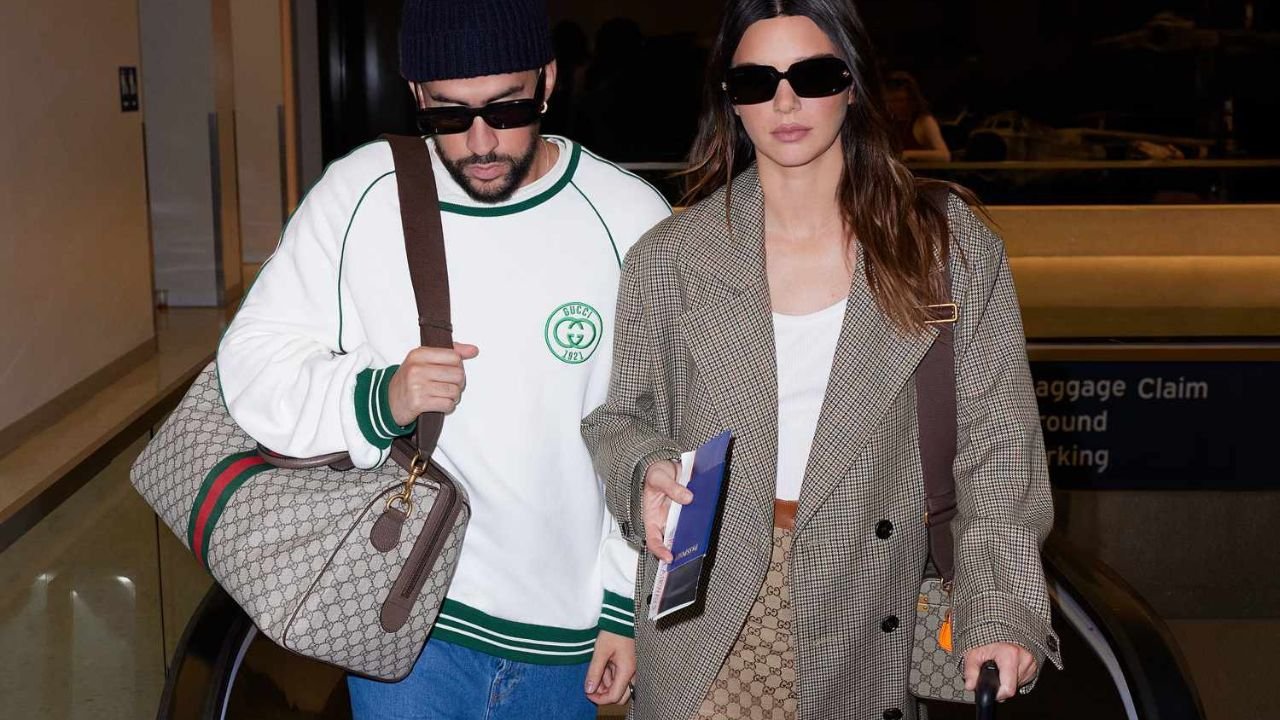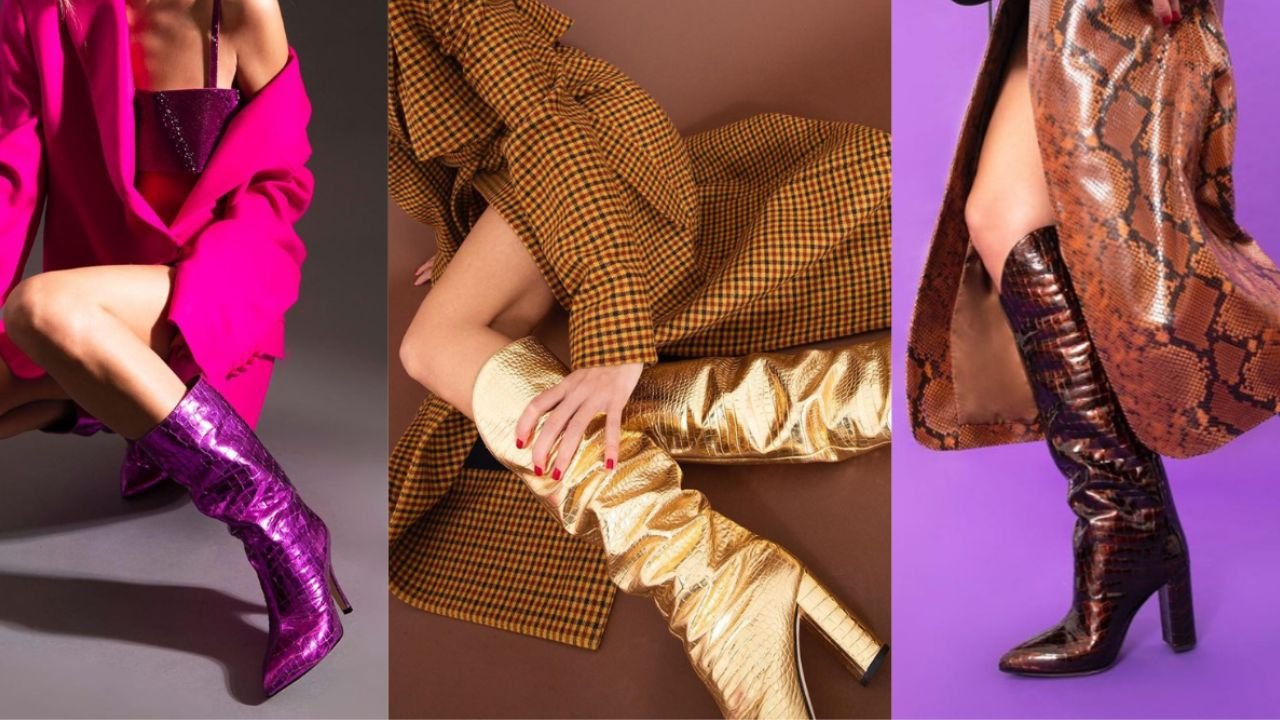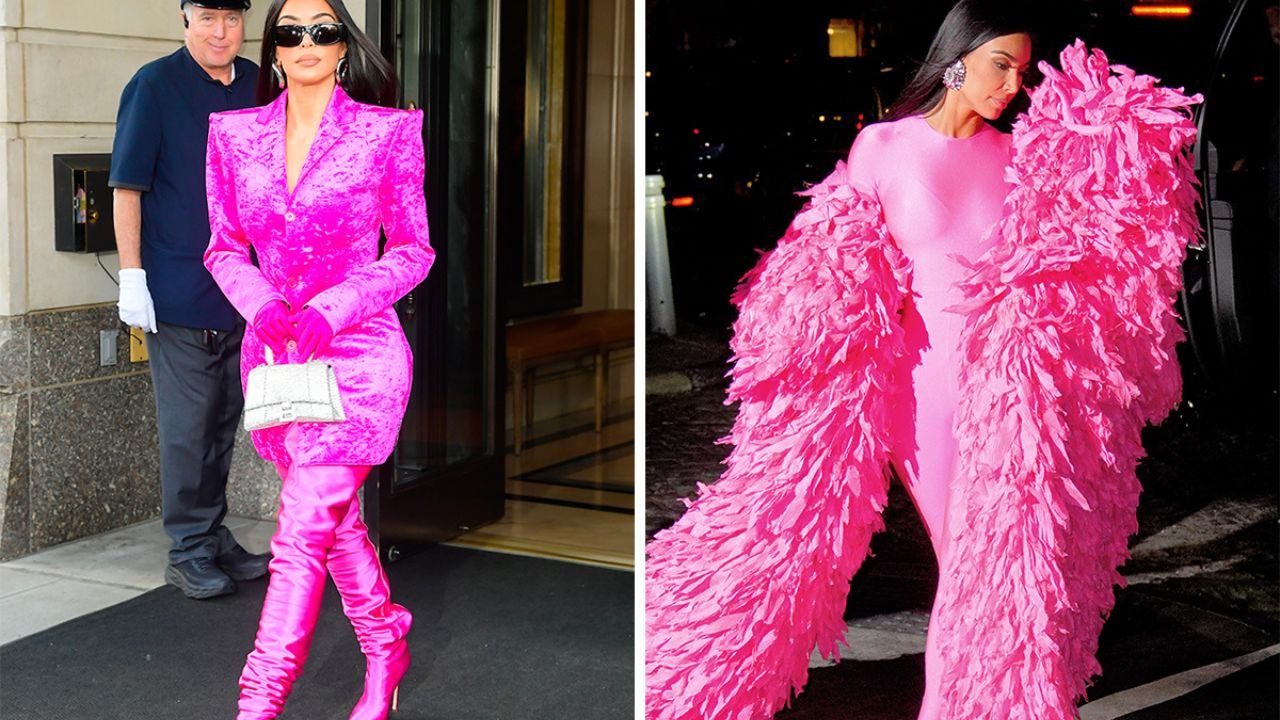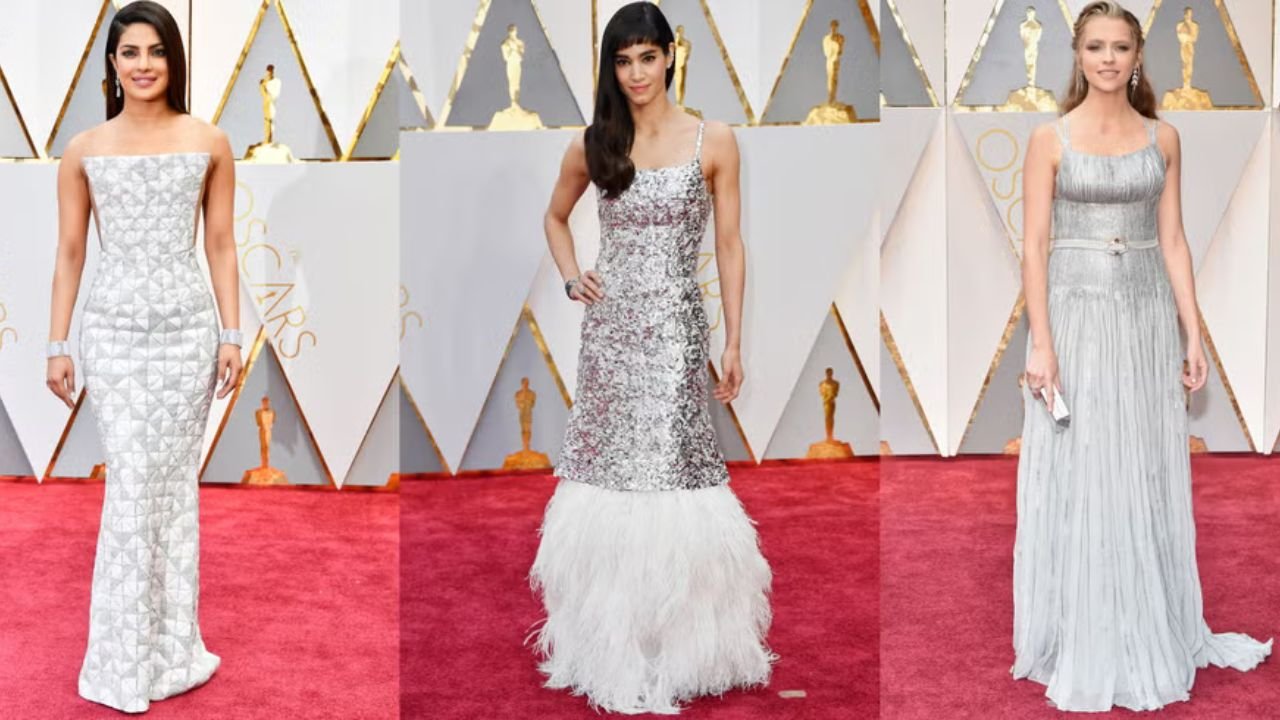Introduction
In the ever-evolving landscape of fashion and pop culture, collaborations between high-end brands and influential celebrities have become the norm. They serve as powerful strategic tools to capture new audiences, redefine brand narratives, and stay at the forefront of cultural relevance. Recently, Gucci, one of the world’s most iconic luxury fashion houses, announced its latest campaign featuring a dynamic duo: Kendall Jenner and Bad Bunny.
This partnership is more than just a marketing move; it epitomizes a new era of inclusivity, cross-generational appeal, and cultural convergence. Dubbed the “Fashion Bomb Couple” by fans and media alike, Jenner and Bad Bunny symbolize a merging of different worlds—modeling and music, traditional luxury and streetwear, and American and Latin American cultures. Their collaboration not only elevates Gucci’s brand image but also sparks conversations about representation, influence, and the future of luxury fashion.
In this article, we will explore the significance of this partnership, analyze the backgrounds and cultural impact of Kendall Jenner and Bad Bunny, examine Gucci’s strategic positioning, and discuss what this means for the broader fashion industry.
The Rise of Kendall Jenner and Bad Bunny
Kendall Jenner: The Modern Supermodel
Kendall Jenner’s ascent to fashion stardom is a testament to her multifaceted influence. Emerging from the Kardashian-Jenner clan, Kendall has carved a space for herself in the competitive modeling industry through a combination of striking looks, professionalism, and cultural relevance.
Her career trajectory includes campaigns for Chanel, Versace, and Givenchy, runway appearances at fashion weeks around the world, and a strong social media presence. Beyond her modeling achievements, Kendall has become a cultural icon, embodying contemporary beauty standards and influencing trends in fashion, beauty, and lifestyle.
Kendall’s appeal lies in her blend of relatable persona and aspirational glamour. She represents the modern consumer—digitally savvy, fashion-forward, and globally connected. Her influence extends beyond traditional fashion circles, making her a valuable ambassador for luxury brands seeking to appeal to younger generations.
Bad Bunny: The Latin Trap Phenomenon
Born Benito Antonio Martínez Ocasio, Bad Bunny has revolutionized the music industry with his unique blend of Latin trap, reggaeton, and hip-hop. From humble beginnings in Puerto Rico, Bad Bunny’s rise to international stardom has been meteoric, driven by groundbreaking music, authentic storytelling, and cultural representation.
He is celebrated not only for his musical talent but also for his bold fashion choices, gender-fluid aesthetics, and advocacy for social issues. Bad Bunny’s persona challenges traditional norms of masculinity and fashion, making him a symbol of self-expression and cultural pride.
His influence extends beyond music—he’s a fashion icon who frequently collaborates with brands like Adidas, Crocs, and Converse, and often pushes boundaries with his eclectic style. With a massive following on social media and streaming platforms, Bad Bunny commands attention across diverse demographics, especially among youth and Latin American audiences.
The Significance of the Gucci Partnership
Why Gucci?
Gucci has long been recognized for its innovative approach to luxury fashion, blending tradition with modernity. Under the creative direction of Alessandro Michele, the brand has embraced a bold, eclectic aesthetic that appeals to a younger, more diverse audience.
The house’s recent campaigns and collaborations reflect a strategic shift towards inclusivity, cultural relevance, and streetwear influence. Gucci’s embrace of contemporary culture is exemplified by its collaborations with artists, musicians, and influencers—making the brand resonate with a global, style-conscious demographic.
The Strategic Choice of Kendall Jenner and Bad Bunny
Partnering with Kendall Jenner and Bad Bunny positions Gucci at the intersection of different cultural spheres:
- Kendall Jenner embodies the modern muse—sophisticated, globally recognized, and deeply embedded in high fashion.
- Bad Bunny embodies street culture, authenticity, and Latin American pride—bringing a fresh, rebellious energy to the brand.
Together, they represent a bridge between the worlds of traditional luxury and streetwear, high fashion and pop culture. This pairing signals Gucci’s commitment to diversity and cultural relevance, appealing to a broad spectrum of consumers.
Campaign Themes and Aesthetics
The campaign featuring Jenner and Bad Bunny explores themes of duality, self-expression, and cultural fusion. Visuals showcase a mix of opulent, classic Gucci motifs with streetwear-inspired elements—bold prints, vibrant colors, and gender-fluid styles.
This aesthetic reflects the current zeitgeist—embracing individuality, challenging gender norms, and celebrating different cultural identities. The campaign’s imagery often depicts Jenner and Bad Bunny in contrasting yet complementary settings, emphasizing their unique personas while highlighting their collective influence.
Cultural Impact and Industry Repercussions
Redefining Luxury and Inclusivity
The collaboration signals a shift in the luxury fashion industry toward greater inclusivity and representation. By elevating a Latin artist like Bad Bunny alongside a mainstream supermodel, Gucci underscores its commitment to diverse narratives.
This move resonates with younger consumers who prioritize authenticity, social consciousness, and cultural identity. It challenges the traditional exclusivity of luxury brands, making high fashion more accessible and relatable.
Bridging Generations and Cultures
Jenner and Bad Bunny’s partnership exemplifies how brands can effectively connect different generations—Millennials and Generation Z—through shared cultural references and values. Their combined appeal spans age, ethnicity, and social backgrounds, fostering a sense of global community.
Influence on Fashion Trends
The campaign’s aesthetic—gender-fluid, streetwear-influenced, and vibrant—sets a trend that many brands are likely to follow. It encourages experimentation with gender norms and promotes a more inclusive vision of beauty and style.
Impact on Fan Engagement and Market Expansion
By involving figures from different cultural spheres, Gucci amplifies its reach into diverse markets. Fans of Kendall Jenner and Bad Bunny are highly engaged, sharing campaign visuals across social media and generating organic buzz.
This strategy also taps into the Latin American market, which is increasingly influential in global fashion, music, and entertainment.
The “Fashion Bomb Couple”: Public Reaction and Media Coverage
The media response to Kendall Jenner and Bad Bunny’s partnership has been overwhelmingly positive, with headlines emphasizing the cultural significance and innovative nature of the collaboration.
Fans have dubbed them the “Fashion Bomb Couple,” celebrating their chemistry, style, and cultural impact. Social media platforms buzz with praise, memes, and discussions about the future of luxury fashion.
Fashion critics recognize the partnership as a bold move that pushes boundaries and challenges industry norms, setting a precedent for future collaborations.
The Broader Context: Cultural Convergence and Future Trends
The Rise of Cross-Cultural Collaborations
This partnership is emblematic of a broader trend—luxury brands increasingly collaborate with artists, musicians, and influencers who represent diverse cultures and lifestyles. These alliances foster authenticity and cultural resonance.
Recent examples include Louis Vuitton’s collaborations with Virgil Abloh, Dior’s partnership with Billie Eilish, and Nike’s work with Travis Scott. Such collaborations prioritize storytelling, identity, and cultural relevance.
Embracing Gender Fluidity and Self-Expression
The campaign’s gender-fluid aesthetics align with a societal shift toward fluidity and inclusivity. Fashion is becoming less about rigid categories and more about personal expression—a movement championed by figures like Bad Bunny.
The Role of Social Media and Digital Culture
Platforms like Instagram, TikTok, and Twitter amplify campaigns and influence buying behaviors. Celebrity partnerships are now as much about digital storytelling as traditional advertising, making social media engagement a critical component.
Future of Luxury Branding
As the industry continues to evolve, brands that embrace authenticity, diversity, and cultural relevance will thrive. Kendall Jenner and Bad Bunny’s partnership exemplifies this future—one where fashion is a celebration of individuality and collective identities.
Challenges and Criticisms
While the partnership has been widely celebrated, some critics point out potential pitfalls:
- Superficiality: Risk of tokenism or superficial diversity efforts.
- Cultural Appropriation: Sensitivities around cultural symbols and identities.
- Commercialization: Over-commercialization of cultural symbols can dilute their significance.
- Authenticity: Maintaining genuine representation versus performative branding.
Brands must navigate these challenges carefully to sustain credibility and respect.
Conclusion: A New Era for Fashion and Culture
Kendall Jenner and Bad Bunny becoming Gucci ambassadors marks a significant milestone in the fashion industry’s ongoing transformation. Their partnership exemplifies a shift toward inclusivity, cultural convergence, and authentic storytelling—values that resonate with today’s consumers.
This collaboration is more than a marketing campaign; it’s a cultural statement, challenging norms and redefining what luxury can be. It highlights the power of cross-cultural influence, gender fluidity, and digital engagement in shaping modern fashion narratives.
As the “Fashion Bomb Couple” continues to break barriers and inspire new trends, their partnership paves the way for a more diverse, expressive, and interconnected fashion future—one where style knows no boundaries.
References and Further Reading
- Vogue. (2023). “Kendall Jenner and Bad Bunny’s Collaboration with Gucci: A Cultural Shift.”
- Business of Fashion. (2023). “Luxury Brands Embrace Diversity: The New Face of Fashion.”
- Harper’s Bazaar. (2023). “The Rise of Cross-Cultural Collaborations in Fashion.”
- Gucci Official Website and Campaign Content.
- Social media analysis reports on celebrity influence and brand engagement.




